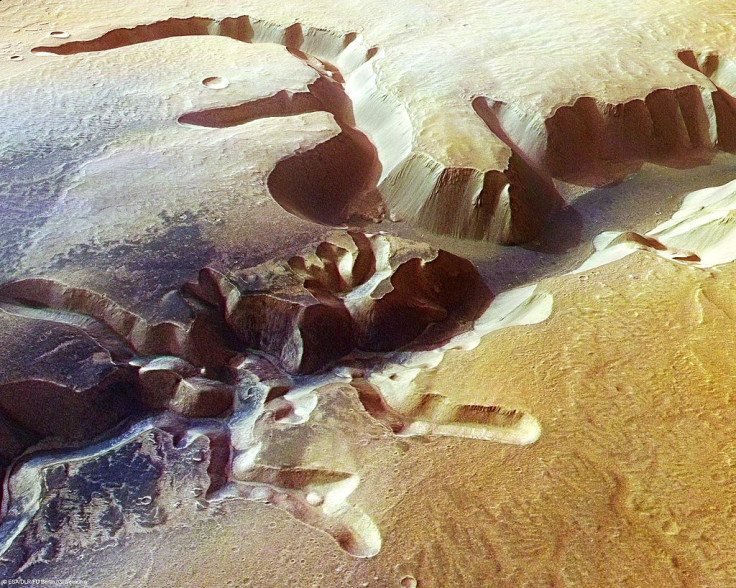Mars Mystery: Mind-Boggling Sand Movements On Mars Explained

Scientists have always wondered how the mind-boggling sand sculptures on planet Mars were formed, prompting experts to study how sand on the Red Planet actually moves.
Now, a recent study tries to explain this long-standing Mars mystery of how Martian sand moves around. According to a report, factors such as Martian winds, the planet’s thin atmosphere, temperature and also topography affect how sand dunes on Planet Mars are shaped. In fact, these elements behave so differently from those found on Earth that it forms sand dunes and sand “sculptures” that are not found anywhere on our planet.
The study is significant because it can help scientists plan future human missions to Mars. The report said that even if Mars is plagued by planet-wide dust storms (one which eventually killed the NASA rover, Opportunity), most of the time sands on the Red Planet do not shift as much as scientists expect.
The planet’s weak atmosphere (only 0.6 percent of the Earth’s atmospheric pressure) affects the movement of the wind, making it weak as well. This means that Planet Mars doesn’t have enough wind power to move sand around.
"On Mars, there simply is not enough wind energy to move a substantial amount of material around on the surface. It might take two years on Mars to see the same movement you'd typically see in a season on Earth," Matthew Chojnacki, a planetary scientist from the University of Arizona Lunar and Planetary Lab, said.
To prove their theory, the scientists picked 54 dune fields which have 495 individual dunes that have sculpted sand that stand from 2 to 120 meters tall. Using data taken from the HiRISE camera on NASA’s Mars Reconnaissance Orbiter in the last two to five years, they were able to create a map of sand volumes and dune migration rates.
"We wanted to know: Is the movement of sand uniform across the planet, or is it enhanced in some regions over others? We measured the rate and volume at which dunes are moving on Mars," Chojnacki said.
What they discovered is that sand movement rate is significantly different among various locations. For example, crescent-shaped dunes move on an average of just half a meter per year which is 50 times slower than those found on Earth. Some regions such as the Syrtis Major Planum have been recorded to have stronger sand movement.
These have resulted in interesting and very different sand formations that are most likely exclusive only to planet Mars.
© Copyright IBTimes 2024. All rights reserved.





















